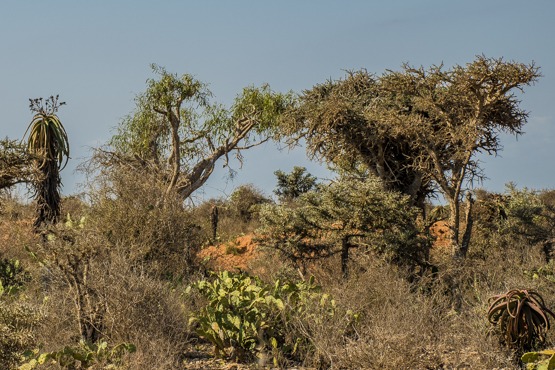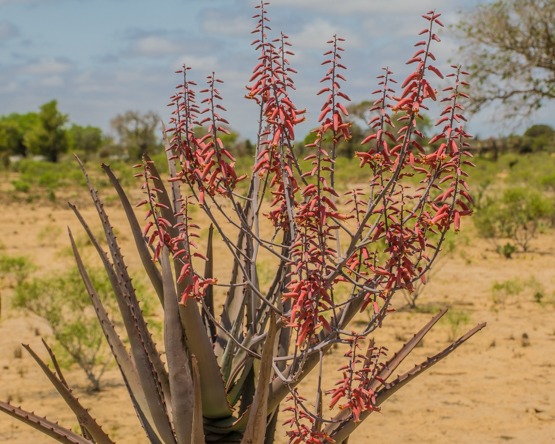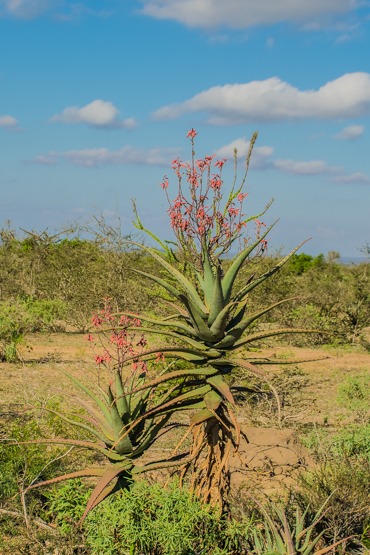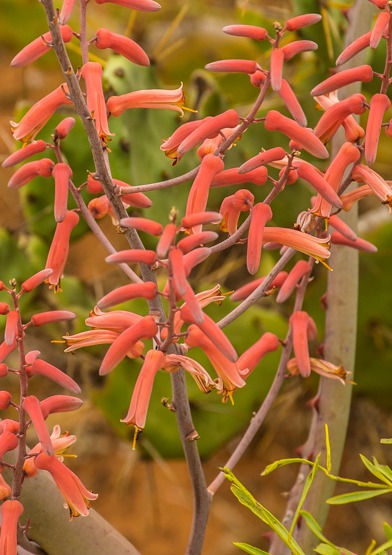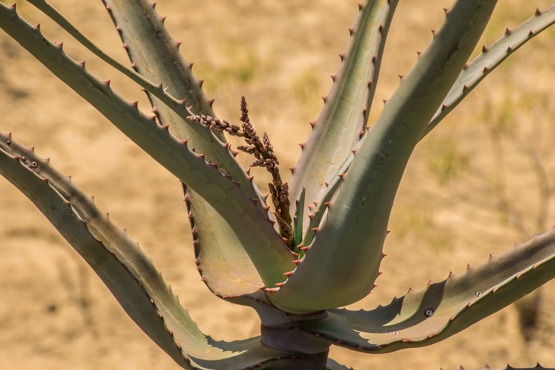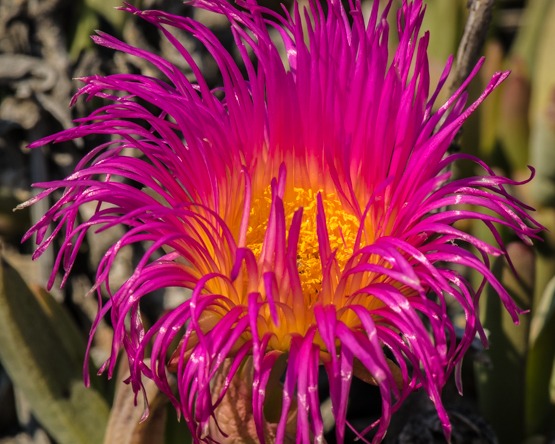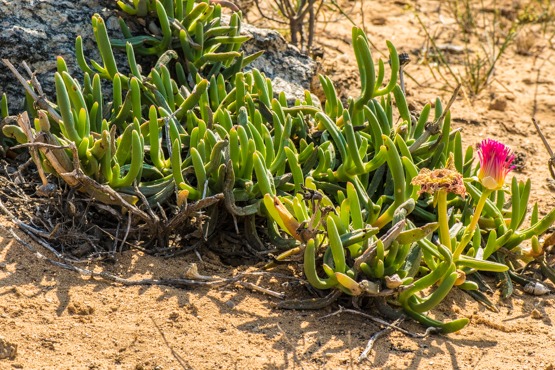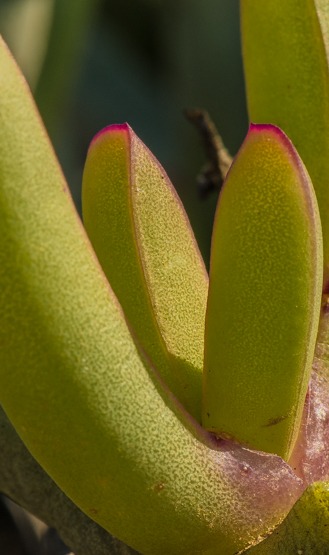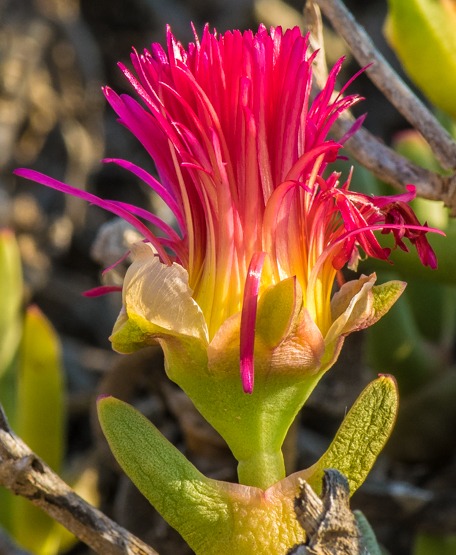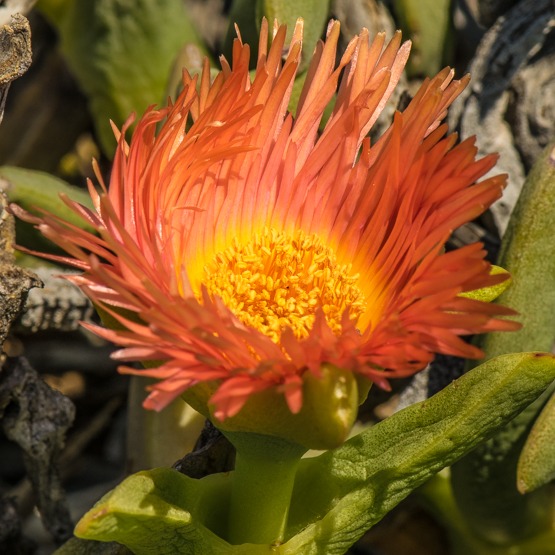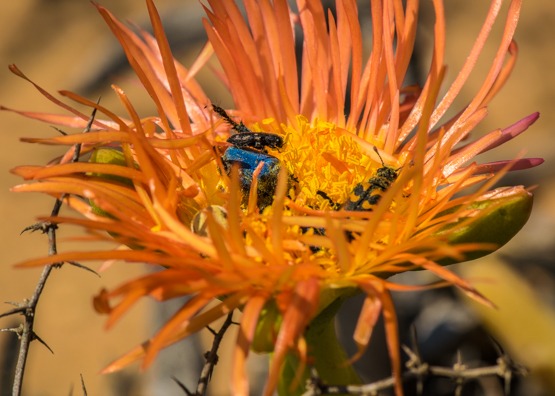Madagascar is home to a number of tall Aloe species and this is one of them. It may either form a 2-6 m tall single-stemmed tree or a more or less open shrub; it is fast-growing and very common on sandy soil in dry shrubby vegetation in the western, south-western and southern parts of the island. The leaves are collected for medicinal purposes.
The dull blue-green to red leaves are erect (or somewhat hanging down in very dry conditions) and to a meter long and 7 cm wide at the base.
The flowers are arranged in much-branched inflorescences up to a meter high and appear from March to December, but mainly in August and September. They are coral red (pale red in var. rosea).
